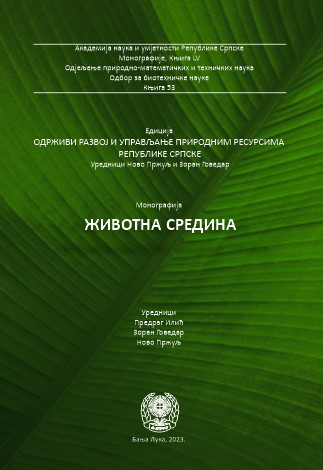Emissions of Sulphur Dioxide (SO2) from Coal-Fired Power Plants in Serbia and Bosnia-Herzegovina: First Attempts of a Validation of TROPOMI Satellite Products with Airborne In Situ Measurements
DOI:
https://doi.org/10.7251/EORU2309169HKeywords:
Sulphur dioxide emissions, coal-fired power plants, airborne measurements, satellite validation, BalkansAbstract
The Western Balkan region is known for emitting alarmingly high sulphur dioxide amounts from coal-fired power plants. Though a number of environmental regulations have been introduced in recent years (e.g. desulphurisation installations, construction of modern power plants), the pollution burden is still much higher than recommended by the authorities. A number of different montoring systems are required to observe the growing pollution situation in the Western Balkan region, partly caused by a high energy demand from outside (e.g. Western Europe).Several of the top ten SO2 polluters in Europe are located in Bosnia-Herzegovina and Serbia. Here we present the first in situ measurements of sulphur dioxide in this region conducted with a German research aircraft in cooperation with local scientists in Bosnia-Herzegovina and Serbia. Two of the strongtest emitting coalfired power plants were selected for the measurements in autumn 2020: Tuzla in Bosnia-Herzegovina and Nikola Tesla in Serbia (Nikola Tesla). The measurements were mainly conducted in the boundary layer (below ~1 km altitude in winter). Downwind of the power plants, extremely high SO2 mixing ratios exceeding 100 parts per billion (ppb = nmol mol-1 ) were measured at a distance of ~20-40 km from the sources. The SO2 plumes from the power plants were trapped in well-defined inversion layers between ~500-1000 m altitude. The airborne measurements can be used to validate synchronous spaceborne SO2 measurements from the TROPOspheric Monitoring Instrument (TROPOMI) onboard the Sentinel-5P satellite. A first intercomparison indicates some problems with dense smoke clouds frequently covering these countries in the winter months. However, it turned out that the Nikola Tesla flight is to some extent suited for a TROPOMI-SO2 validation, since it was obtained during cloud-free conditions with a well-defined vertical extension of the probed SO2 plume (needed to estimate the Vertical Column Density, VCD, measured by the satellite). In addition, these airborne measurements accompanied by model simulations can be used to determine the SO2 emission strength of the power plants and to compare it to the source strength reported by the power plant operators. The results indicate a reasonable agreement between the airborne measurements, model results, emission inventories, and satellite measurements for the Nikola Tesla power plants.
